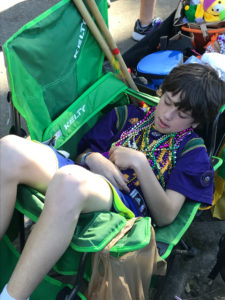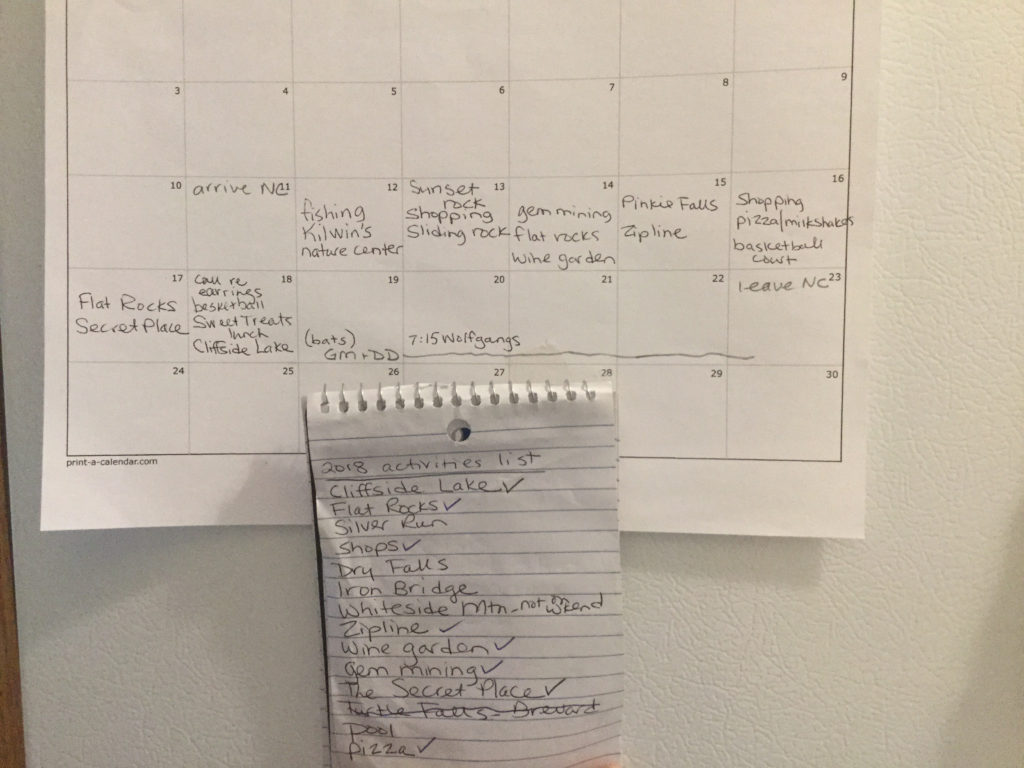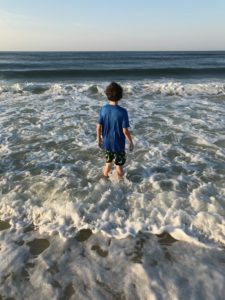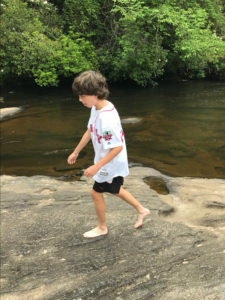
Executive Functions are those secretarial tasks your brain performs for you, and they’re developing over the course of childhood and young adulthood. So kids’ Executive Function abilities vary, and luckily they’ll improve.
The main Executive Function we use on vacations is thinking ahead. Most of the time, I estimate that James is thinking about 30 seconds ahead:
My toe hurts. Let’s go home!
While I’m liable to get bogged down thinking 30 years ahead:
James is going to have to wear velcro shoes to his office.
James starts each day of a vacation bursting with ideas about what to do. He doesn’t take into account how many hours there are in a day, how much energy each member of the family will have, money, travel time, etc. That’s all my job.
For many kids, planning ahead requires abstract thinking abilities they don’t yet have.
Luckily, since James began to self-regulate a few years ago, he collapses as in the photo above. In the past, he’d wear himself out and then wonder:
- why he felt so bad
- when the next activity was coming
When on vacation, keep in mind that your child needs your help thinking ahead more than ever. Some examples of how this can impact a vacation day:
- Walking past an ice cream shop and wanting it right away. You have dinner reservations in an hour.
- Seeing a unicorn Beanie Boo in a souvenir shop that’s easily available at home and costs his entire souvenir allowance.
- Refusing to take a 10-minute walk to see a beautiful waterfall because “I’m too tired,” then running around the hotel lobby like a maniac instead.
- Having a fit because you “take so long” to get out of the house, as you collect items you might need over the course of the day: snacks, swimwear, sunscreen, tickets, etc.
It’s always the same, even as James ages. He’s the enthusiast, and I’m the worrier. When we work together, though, it’s a better day for both of us.
My essay for Mother.ly about a Disney vacation.




